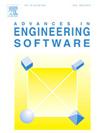A novel 2-DOF translational parallel mechanism with completely separated drive and constraint branches: Kinematics, dimension optimization and application
IF 4
2区 工程技术
Q2 COMPUTER SCIENCE, INTERDISCIPLINARY APPLICATIONS
引用次数: 0
Abstract
The low-altitude rocket automatic docking and fueling situation requires posture adjustments under eccentric heavy loads, demanding spatial translation capabilities from the docking mechanism. During docking, the mechanism must withstand substantial forces applied at a point distant from the connection interface with the equipment. This paper proposes a novel of two degrees of freedom (DOF) translational parallel mechanism (PM) with completely separated drive and constraint branches. Its drive branches are unaffected by constraint force. The novel PM is suited for pose adjustment in heavy-load eccentric conditions, featuring excellent force performance and the ability to undergo specific optimization of branch layout based on predefined conditions. In order to make it applicable to the rocket automatic docking and fueling situation, the novel PM was combined with the single DOF moving guide to form the 3-DOF translation hybrid mechanism. Optimization strategy have been proposed. And dimension optimization was applied to it and traditional 3-DOF translation PM. The result revealed that, compared to traditional PM, the hybrid mechanism composed of the novel PM and the moving guide demonstrates superior optimization performance and is particularly well-suited for rocket automatic docking and fueling situation.
求助全文
约1分钟内获得全文
求助全文
来源期刊

Advances in Engineering Software
工程技术-计算机:跨学科应用
CiteScore
7.70
自引率
4.20%
发文量
169
审稿时长
37 days
期刊介绍:
The objective of this journal is to communicate recent and projected advances in computer-based engineering techniques. The fields covered include mechanical, aerospace, civil and environmental engineering, with an emphasis on research and development leading to practical problem-solving.
The scope of the journal includes:
• Innovative computational strategies and numerical algorithms for large-scale engineering problems
• Analysis and simulation techniques and systems
• Model and mesh generation
• Control of the accuracy, stability and efficiency of computational process
• Exploitation of new computing environments (eg distributed hetergeneous and collaborative computing)
• Advanced visualization techniques, virtual environments and prototyping
• Applications of AI, knowledge-based systems, computational intelligence, including fuzzy logic, neural networks and evolutionary computations
• Application of object-oriented technology to engineering problems
• Intelligent human computer interfaces
• Design automation, multidisciplinary design and optimization
• CAD, CAE and integrated process and product development systems
• Quality and reliability.
 求助内容:
求助内容: 应助结果提醒方式:
应助结果提醒方式:


